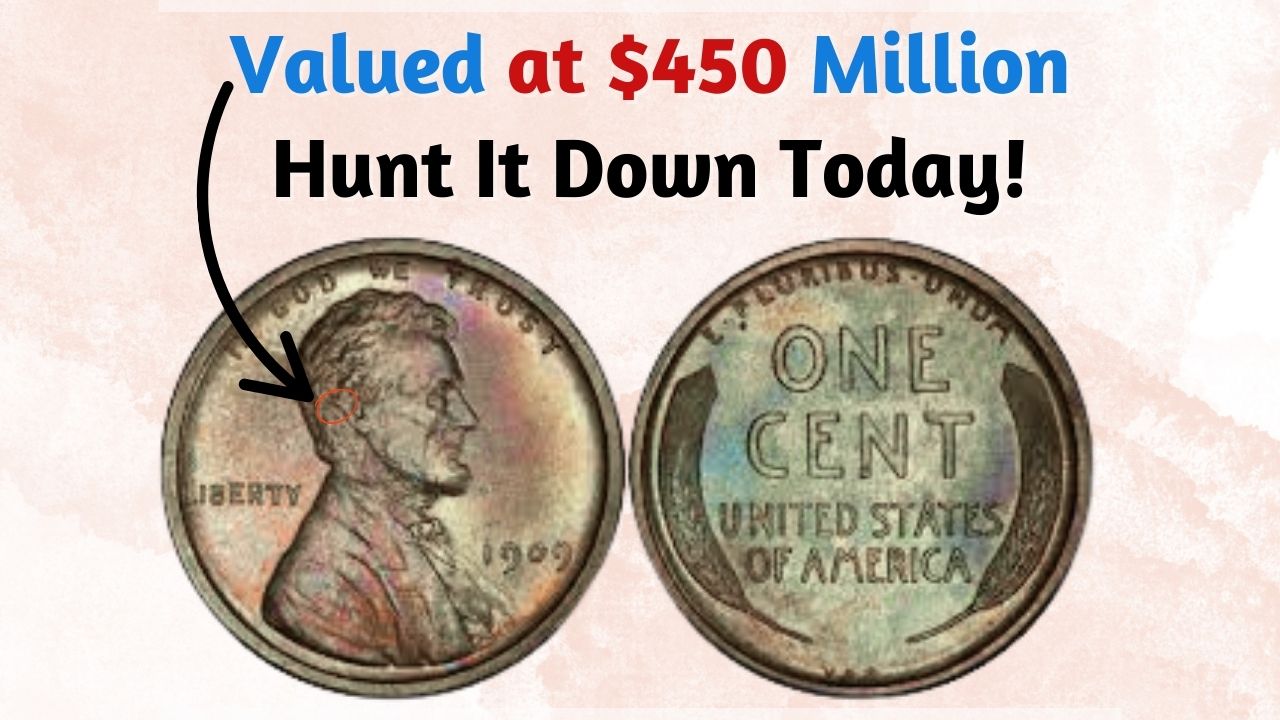Have you ever looked at a penny and thought it might be worth millions? Well, one Lincoln Wheat Penny is! It’s now valued at around $3.1 million. That’s more than some luxury watches or even a big house. What was once a common coin in pockets and piggy banks is now a collector’s dream. we talk about how this tiny coin turned into a rare treasure.
The beginning of the Lincoln Wheat Penny
This penny first came out in 1909. It was made to honor 100 years since Abraham Lincoln’s birth. The front of the coin shows Lincoln’s face. On the back, there are two wheat stalks. These pennies were used in everyday life until 1958. Billions were made, and people used them for everything. Now, they are more than just coins. They are part of American history and loved by coin collectors.
Why is this penny worth $3.1 million
Not all Wheat Pennies are this valuable. This one is special. A few things make it rare. First, it’s extremely rare. Only a few like this one exist. Second, it has a strong historical story. And third, it’s in perfect condition.
Some special versions were made by mistake. For example, in 1943, pennies were supposed to be made from steel due to World War II. But a few were accidentally made from copper. These mistakes are now worth a lot.
Condition is everything
To be worth millions, the penny must be in almost perfect shape. That means no scratches, no wear, and still shiny like new.
Experts grade coins from 1 to 70. A Mint State coin, or “MS” coin, is one that looks brand new. Grades like MS-67 or higher are super rare for old pennies. A penny in such condition will have bright copper color and clear details. It looks just like it did the day it was made.
Special errors that make coins valuable
Some Lincoln Wheat Pennies are worth more because of minting errors. These are small mistakes that happened during the coin-making process.
| Error Type | What It Means |
|---|---|
| Double Die | Design was stamped twice by accident |
| Off-Center Strike | The image is not in the center |
| Wrong Planchet | Coin was made on the wrong metal |
These errors may seem like mistakes, but they’re golden for collectors. They make the coin unique and rare.
Still hidden in old jars
You might be surprised, but rare pennies like these could still be found. They might be in an old jar, a family collection, or even mixed with regular change.
Of course, finding one worth $3.1 million is very rare. But many people have found coins worth hundreds or thousands of dollars. It’s like a small treasure hunt. All you need is a keen eye and a little bit of luck.
Get it checked by experts
If you think you have a valuable penny, don’t just guess. You need to show it to professionals. There are expert grading services that check the coin’s condition and confirm if it’s real. They use special tools and knowledge to give your coin a grade and check if it’s rare. Without expert approval, no one will believe your coin is worth millions.
Learning while collecting
Looking for valuable coins isn’t just about money. It’s also a fun way to learn. You’ll discover facts about American history, how coins are made, and what keeps a coin in good shape. Every penny has its own story.
This hobby can teach you things in a hands-on way. It turns coins into little pieces of history that you can hold in your hand.
Strong community
Coin collecting isn’t just a solo hobby. There’s a whole world of collectors out there. They share tips, stories, and even help each other find rare coins. This creates a strong and friendly community. Even if you don’t find a $3.1 million penny, the journey is fun. It teaches you to notice the small things. Who knows what hidden gems might be sitting in your drawer?
FAQs
What is a Lincoln Wheat Penny?
It’s a penny made between 1909 and 1958 with Lincoln on the front and wheat on the back.
Why is one worth $3.1 million?
Because it’s rare, in perfect condition, and has a minting error.
Can I find one in my house?
It’s very rare, but possible if you have old coins.
How do I know if my penny is valuable?
Show it to a professional coin grader.
Are coin errors good or bad?
For collectors, errors make coins more valuable.











